Practical Handloading
Case Expansion Measurement
column By: Rick Jamison | October, 20
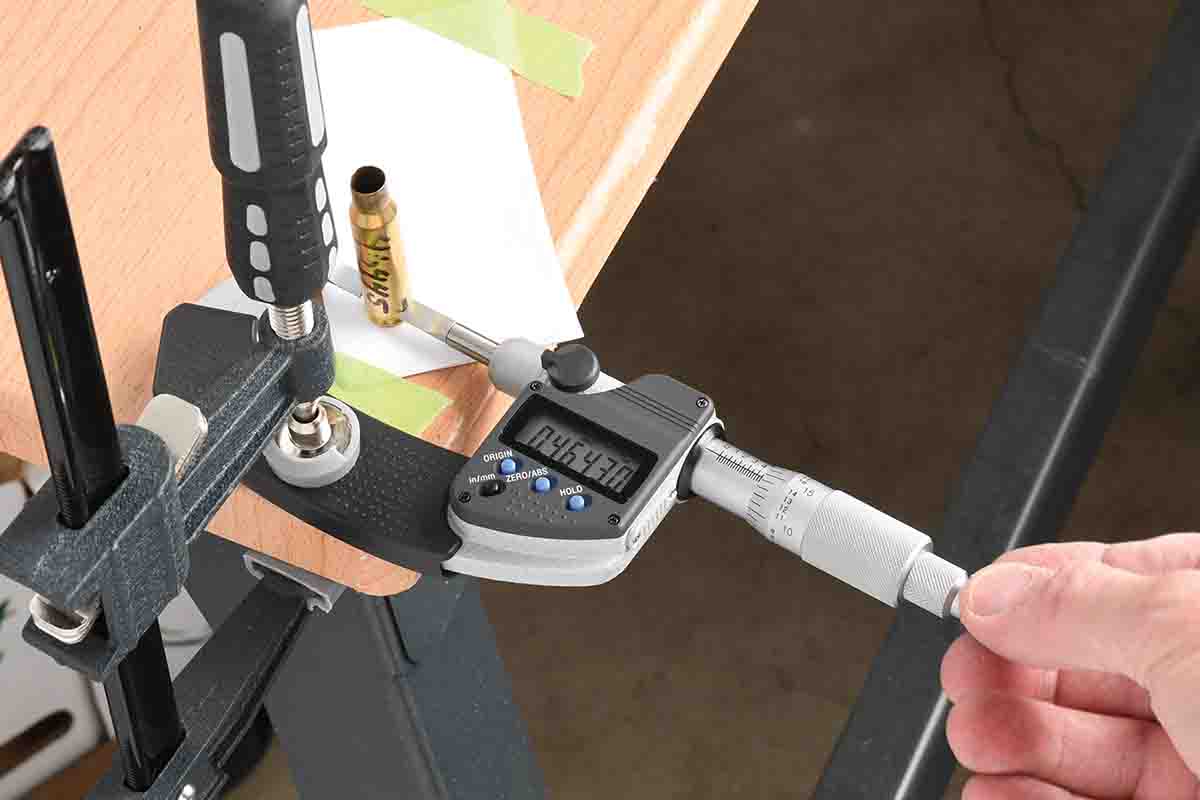
Handloaders have seen the recommendations in load manuals and elsewhere for determining a maximum load with a micrometer. The usual method is to mark each case at the web, then using a blade micrometer, measure each case after firing to see how much the diameter enlarges. Through the years there have been variations on this process. The locations to measure, whether web, expansion ring, extractor groove, rim or belt have varied, as has the amount of acceptable expansion.
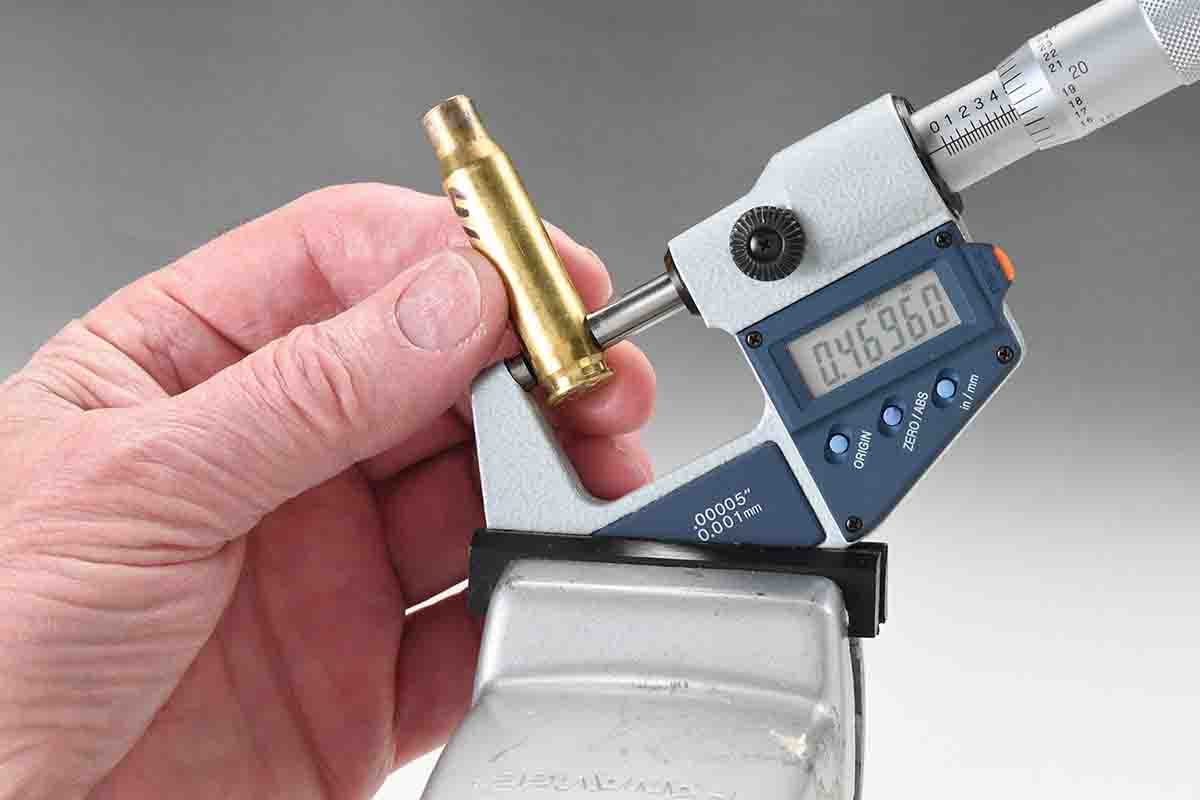
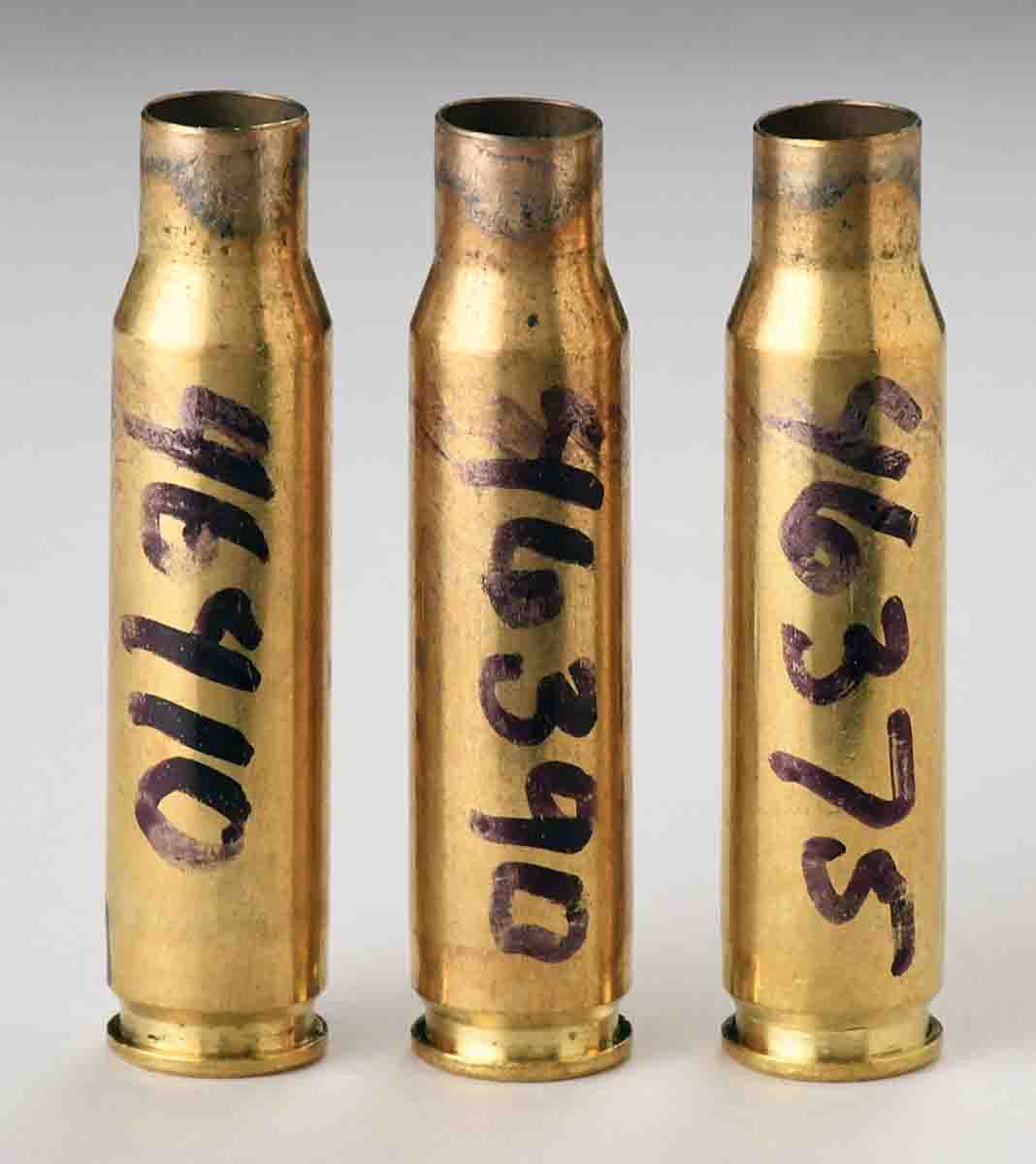
Today, however, there appears to be more of a consensus than ever about measuring, at least from the bullet and powder companies. The web is reported to be the best location on a rimless case, and one should quit adding powder when .0005 inch of expansion has been observed. They say it’s best to measure a minimum of three cases at each level as a handloader progresses in small charge weight increments.
This is one of those ideas that sounds straightforward and simple. Try it sometime. It brings to mind the words of the late gunsmith Bob West. He once commented that anyone who claims to be able to hold machining tolerances to .0001 inch is kidding himself. Those were in the days when gunsmiths relied on manually operated lathes and milling machines, but the point was made. The idea that someone can tote a micrometer to the range in a shooting box and whip it out to determine a maximum load is a similar situation.
Off and on for many years, I have attempted to measure cases to determine a maximum load, and it never seemed to work for me. I remember when I did not have a blade micrometer but read about measuring the expansion ring, rather than the web, to determine a maximum load. I gave it a shot with my flat-anvil Fowler micrometer that could be used to measure a projecting expansion ring. I was left scratching my head. It just did not work for me.
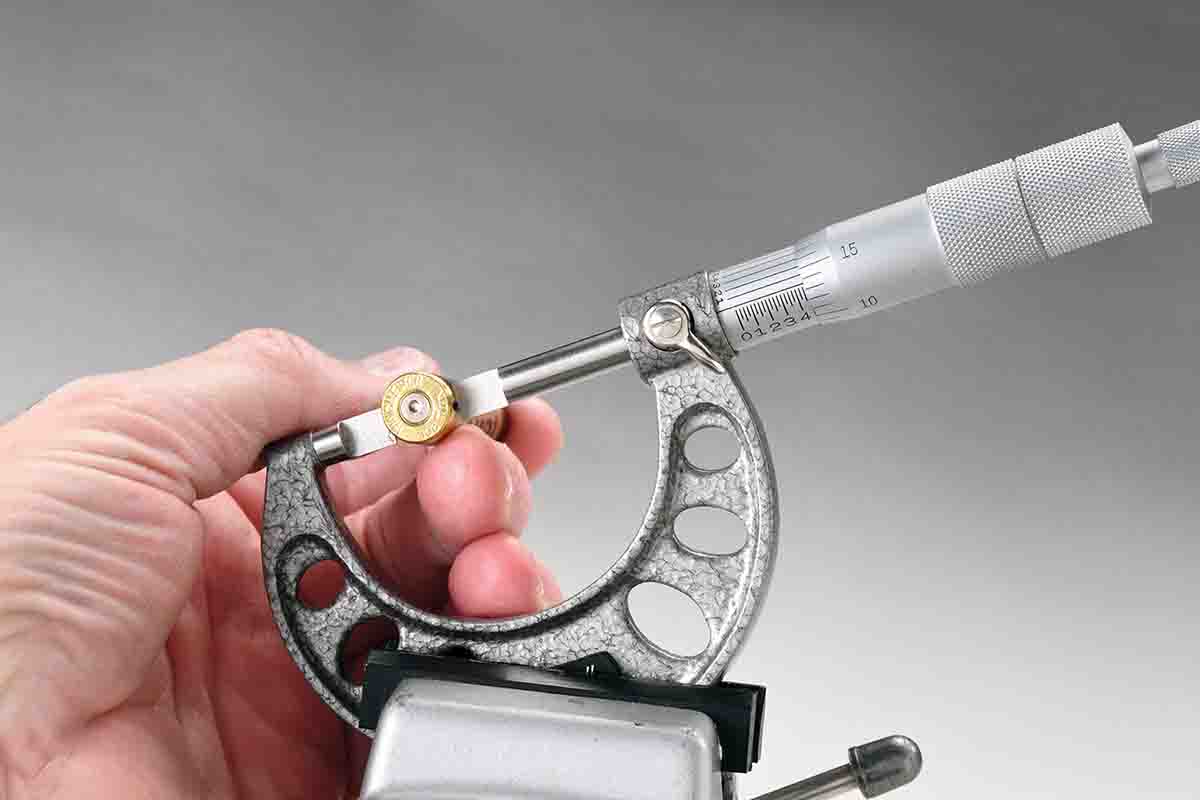
Then one day I bought a blade micrometer and thought my case measuring problems would be solved because I could mic the web. It was the usual NSK with a vernier scale that all micrometers used to have. I reread directions and tried again. Think about trying to hold a case and a micrometer while aligning the blade along the narrow band of web just forward of the extractor groove, and doing this while holding tension on the spindle ratchet and craning your neck to see around the shaft of the vernier scale for the marks that line up. The measurement is constantly shifting – just what you need to measure to .0001 inch. Needless to say, that project ended with frustration too. I chalked it up to a lack of patience.
Years passed. Then one day along came COVID-19. Quarantining seemed made to order for projects that require patience. As a handloading writer, I felt it was my duty to overcome a lack of ability to determine a maximum load with a micrometer. After all, nearly all loading manuals tell how to do it. It is currently on the Hodgdon website labeled as a “simple trick for monitoring pressure of your rifle reloads.” If it’s simple, I figured I ought to be able to do it.
This time I was not messing around. I went whole hog and bought a Mitutoyo Digimatic blade micrometer. I just knew this baby would permit me near-unlimited accuracy in case measurement. I swallowed hard at the $855 price tag from MSC, and told myself that my reputation depended on it. It has six digits in the window and shows five decimal places! A tenth, heck! It measures to a half of a tenth (ten-thousandth). No longer would I have to deal with a vernier scale. I would clamp it in a small portable vise and be able to mic cases lickety-split.
.jpg)
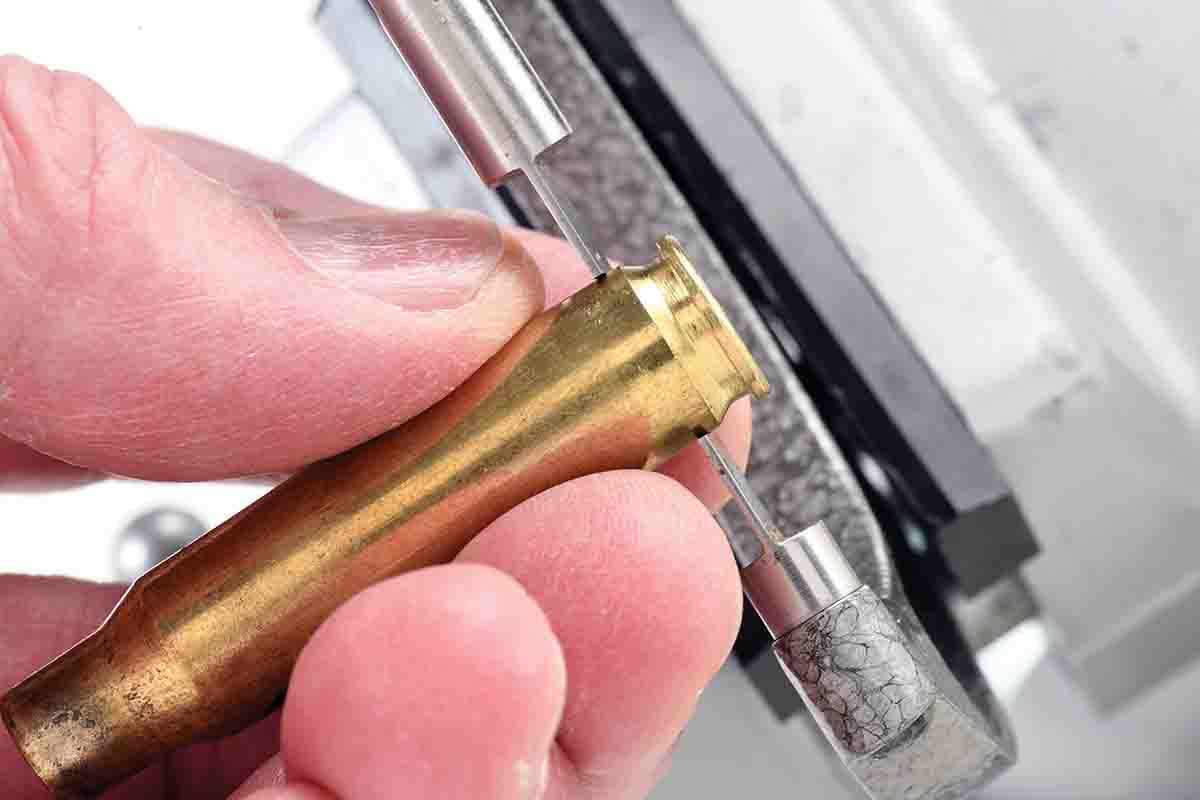
The first thing learned with this device is how easy it is to get inaccurate readings just by how you hold the case in relation to the blade jaws. Though they are very thin, the slightest out-of-square presentation of the brass surface to the jaws makes for an error that is far too large to fit within the accuracy requirement needed for this process. I have well over 1,500 practice measurements written down just for this piece. It is a learning process requiring patience and perseverance. The only way to measure cases accurately is to make some sort of fixture to present the exact location of the case squarely to the jaws.
You can clamp the flat-sided portion of the micrometer onto a tabletop so that the spindle extends out over the edge with the blades parallel with the tabletop. Check the distance of each blade from the tabletop to make certain they are parallel. Then shim up the tabletop with a piece of steel, thin flat plastic or sheets of paper until the base of the case is presented to the blade jaws at the right height just forward of the case’s extractor groove. If one gets too far forward, the brass begins to swell into the expansion ring so that the acceptable measurement band is really narrow, at least on the sample .308 Winchester cases.
.jpg)
This way, a person does not have to hold the mic or the case. Just align the prescribed mark (Sharpie pen) with the midpoint of one blade, make certain that the other side of the case is contacting the midpoint of the other blade, and slowly turn the ratchet until it contacts the case and clicks over once. With the base on a smooth surface, the case can slide a tiny bit and self-align squarely with the blades. It truly makes precise measuring of cases a lot easier and far more precise. The measurements are repeatable.
With the measuring part whip-ped, I was ready for testing. I had it all figured out. I would load the .308 in increments, progressing gradually while firing them in a pressure barrel. That way, I would know the pressure that each individual case endured, and I could equate it to the web expansion measurement received. Then the same loads would be fired in a production rifle, a Model 88 Winchester. What a handloading column it would make!
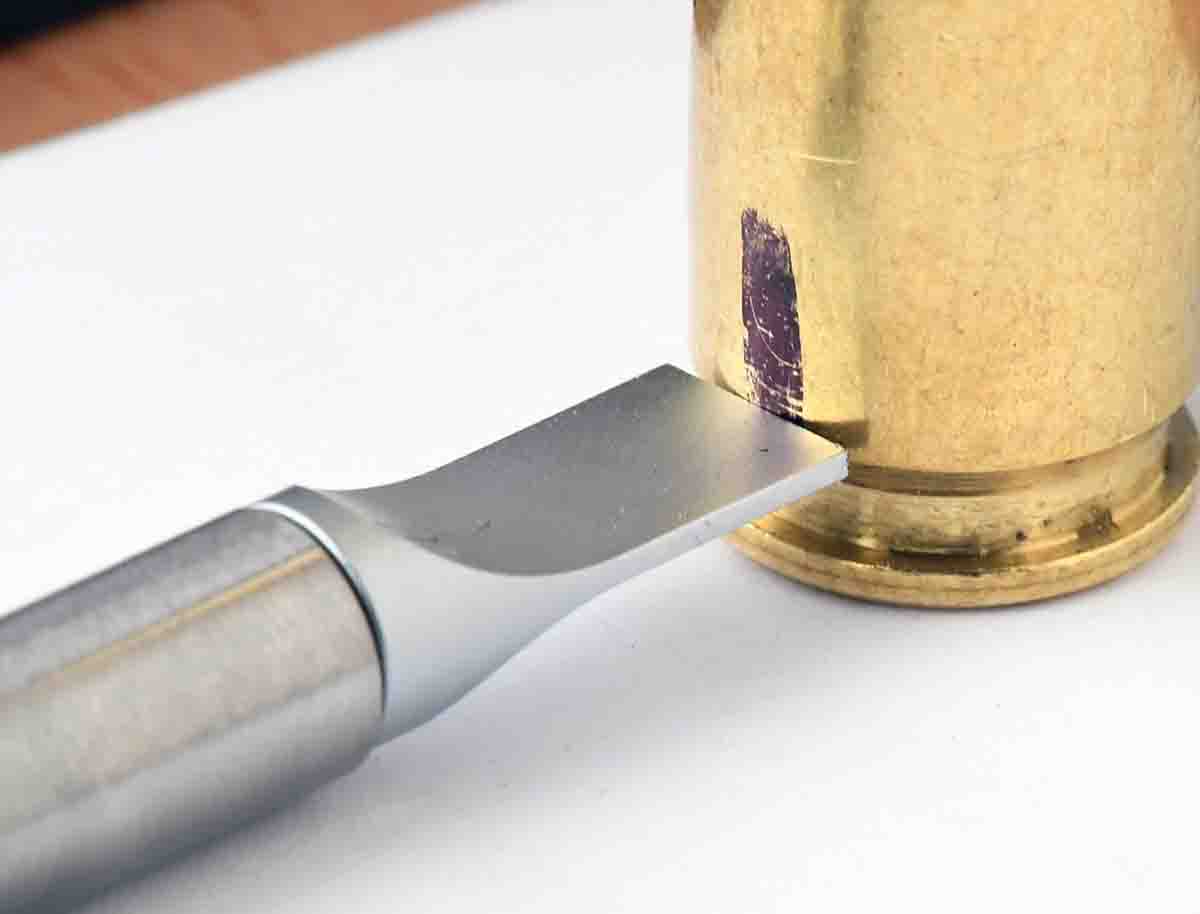
The pressures and velocities tracked beautifully as the powder charge weights increased. I could hardly wait to measure cases and show how velocity, chamber pressure and case expansion measurements all fit nicely together. I could overcome my lack of ability in this area and wow readers with the results at the same time.
The results are listed in accompanying tables. While pressure increased incrementally in the test barrel as expected, and velocities increased in the same manner in both rifles, the case measurements do not. There is no doubt that brass expands as pressure goes up, but it does not expand with the same regularity or predictability. It sort of tracks sometimes, but there are so many instances where measurements are far outside the bounds of what one would expect or be able to explain. Measuring three or five cases for an average does smooth out the numbers. But if I did not have the benefit of already knowing the pressure of the loads, it would be disconcerting when a measurement exceeds the recommended .0005-inch maximum expansion. The truth is, this is a common occurrence. Sometimes the error is on the order of 100 percent or more! You don’t find that with pressure and velocity testing. The tables shown here present some of the better results. Earlier tests were so far off the mark that I abandoned them and started over, several times.
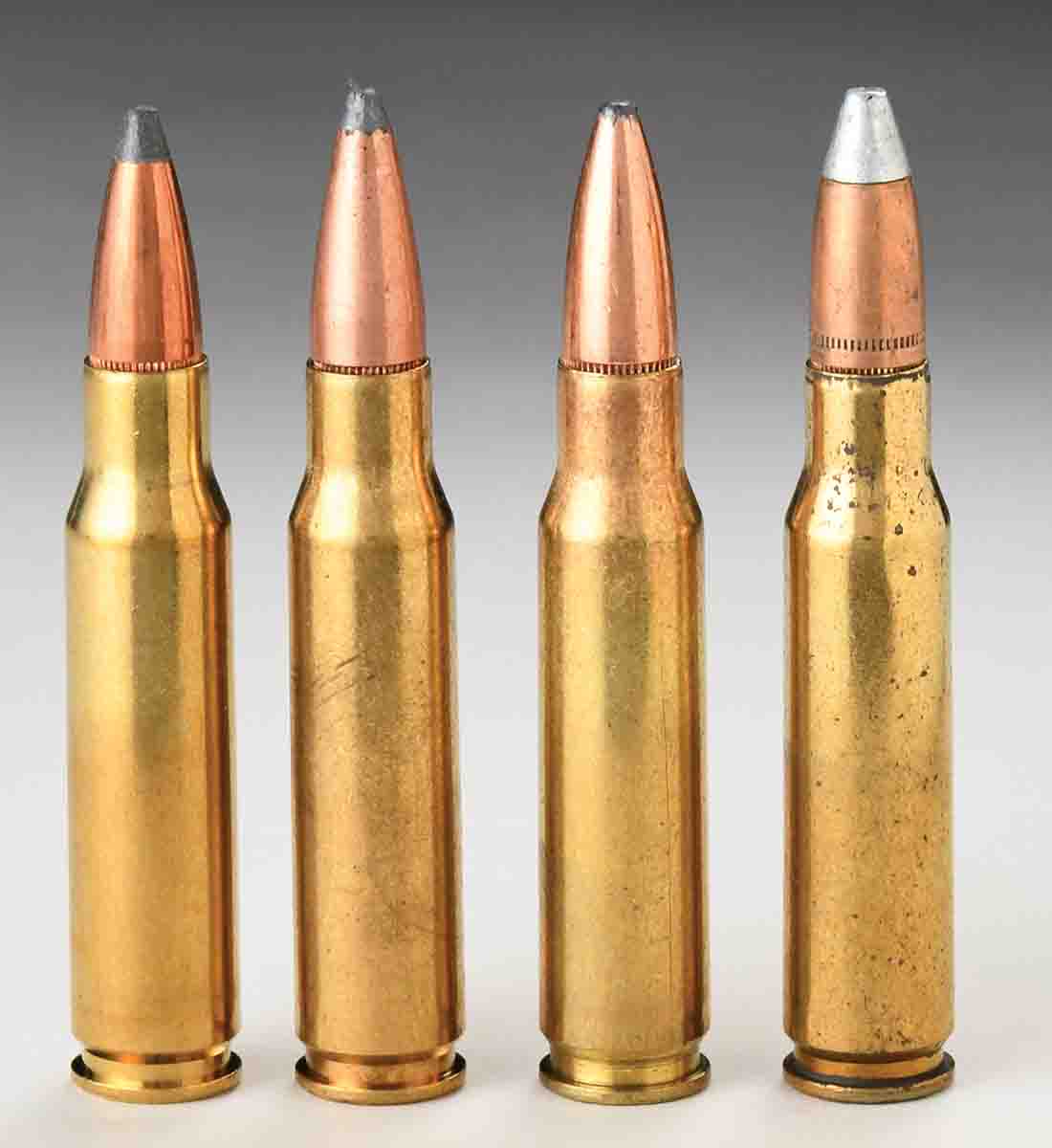
I do not believe measuring cases is something for the average handloader. Because of the glaring and frequent anomalies, I cannot rely on the process to determine a maximum load. Measuring cases is tedious business. I marked and measured cases before going to the range and wrote the measurements on the cases so that there would be no mix-up. That alone is a frustrating process when you have all the ammunition loaded and are itching to go shoot. For me, loading and shooting are a more enjoyable manner to self-quarantine. Shooting sage John Redmon related he doesn’t even want to be distracted by knowing his load’s velocity. His enjoyment is about shooting a small group.
Perhaps I am too spoiled by having used Ken Oehler’s utterly reliable Model 43 PBL for years, the best test unit ever devised. Alas, it is no longer available. The next best thing is to use pressure-tested data from powder and bullet companies made instantly available on the internet almost before a new cartridge or component erupts on the scene. Wildcatters may attempt to use the case expansion measurement system, but based on my own experience, I do not trust it to tell me much.


